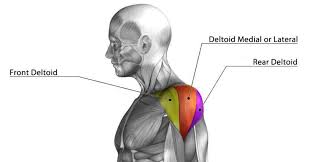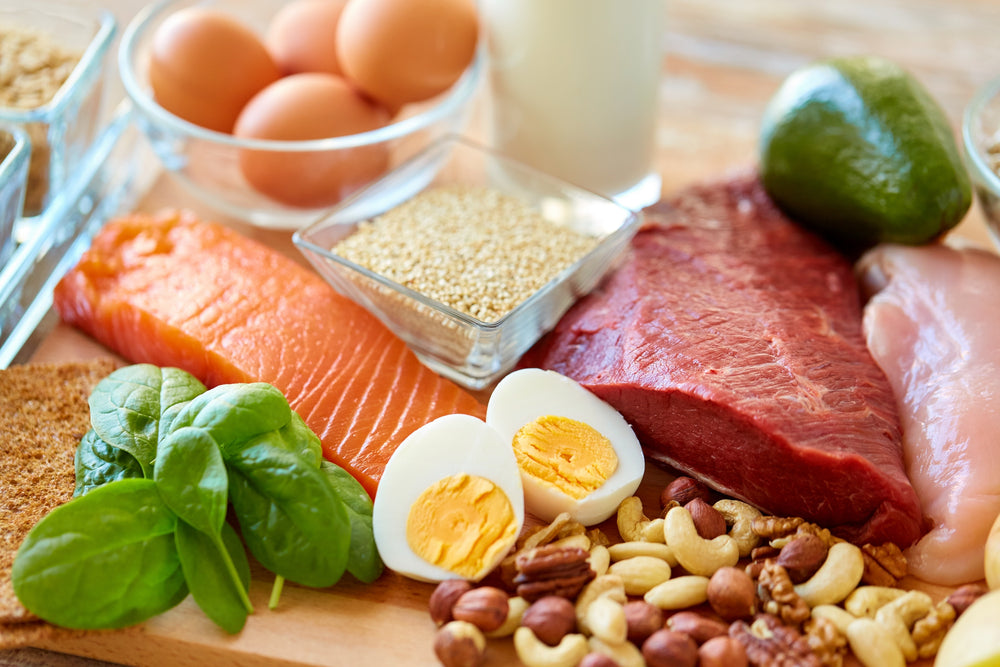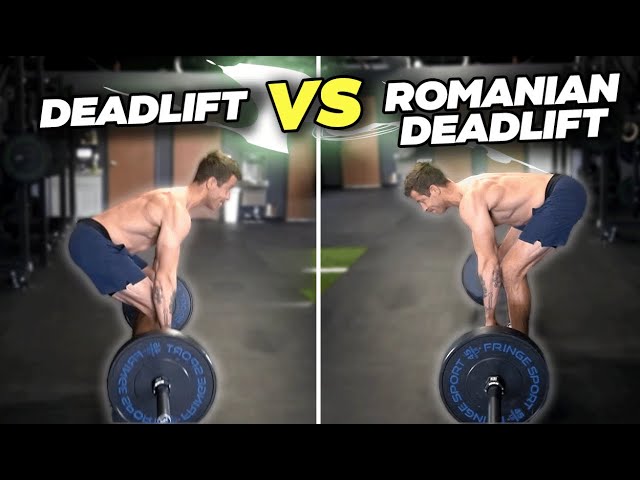The military press, also known as the overhead press, is one of the most effective exercises for developing upper body strength. It is a staple in strength training routines, helping to build powerful shoulders and arms while engaging several other key muscles in the body. But to truly understand the benefits of the military press, it's crucial to know which muscles are worked during the exercise and how proper technique can maximize these benefits. In this comprehensive guide, we will break down the muscles involved, explain the exercise variations, and highlight the importance of form and posture.
Primary Muscles Worked in the Military Press

Deltoids (Shoulders)
The deltoids are the primary muscle group targeted by the military press, making it an essential exercise for building strong, rounded shoulders. The deltoid muscle has three heads:
- Anterior (front) head: The anterior deltoid is highly engaged during the upward pressing motion, as it is responsible for shoulder flexion. This head gets the most stimulation during the military press, contributing to shoulder strength and size.
- Lateral (middle) head: The lateral deltoid assists in shoulder abduction (lifting the arms away from the body), which is essential when the arms are raised to press the weight overhead. Though it is not as active as the anterior head, it plays a critical role in stabilizing the shoulder throughout the lift.
- Posterior (rear) head: While the rear deltoid is not heavily involved in the military press, it provides support and stabilization during the movement, especially during the descent phase of the lift.
By targeting these muscle heads, the military press promotes well-rounded shoulder development, giving lifters the broad, strong look often associated with well-developed deltoids.
Triceps Brachii (Upper Arms)

The triceps, located on the back of the upper arms, play a crucial role in extending the elbows during the military press. As you push the barbell or dumbbells overhead, your triceps are responsible for straightening your arms and completing the lift. This makes the military press not only a shoulder exercise but also an excellent way to strengthen the triceps.
The triceps consist of three heads—long, lateral, and medial—and all are engaged during the military press. The exercise helps develop a full, well-rounded triceps muscle, contributing to both arm strength and aesthetics.
Pectoralis Major (Chest)

While the chest muscles are not the primary focus of the military press, they assist in stabilizing the shoulder joint during the exercise. The pectoralis major, particularly the upper portion (clavicular head), helps keep the arms and shoulders aligned as you press overhead. The chest muscles, therefore, contribute to overall pressing power and shoulder stability.
However, compared to traditional chest exercises like the bench press or push-ups, the involvement of the pectoralis major in the military press is minimal. This makes the military press more effective for shoulder and triceps development than chest growth.
Secondary Muscles Worked in the Military Press
Trapezius (Upper Back)

The trapezius muscles, located in the upper back and neck area, are heavily involved in the military press, particularly in stabilizing the shoulder blades. The upper traps are responsible for elevating the shoulders as you press the weight overhead, ensuring proper shoulder alignment and reducing the risk of injury.
Strong traps are essential for shoulder stability, especially when lifting heavier weights. While the military press doesn’t directly target the traps as much as exercises like shrugs or deadlifts, it still provides secondary stimulation that contributes to upper back strength.
Serratus Anterior (Rib Cage Area)

The serratus anterior, often referred to as the "boxer’s muscle," plays a critical role in the military press by stabilizing the shoulder blades and preventing them from winging outwards. This muscle runs along the sides of the rib cage and is engaged when the arms are pushed overhead.
In the military press, the serratus anterior works in conjunction with the trapezius to ensure proper scapular movement, which is key to performing the exercise safely and effectively. Strengthening this muscle not only improves pressing power but also enhances shoulder mobility and stability.
Rotator Cuff Muscles

The rotator cuff is a group of four muscles that surround the shoulder joint, providing stability and support during overhead movements. These muscles—supraspinatus, infraspinatus, teres minor, and subscapularis—are activated during the military press to help keep the shoulder joint in alignment.
While the rotator cuff muscles do not contribute directly to the pressing movement, they play a vital role in preventing shoulder injuries by stabilizing the joint. Incorporating military presses into your routine can help strengthen these muscles and reduce the risk of shoulder strain or tears.
Supporting Muscles and Core Activation in the Military Press
Core Muscles (Abdominals and Obliques)
One of the often-overlooked aspects of the military press is the engagement of the core muscles. To maintain balance and prevent excessive arching of the back, the core muscles—specifically the rectus abdominis (abs) and obliques—must remain tight throughout the movement. This helps to stabilize the spine and maintain an upright posture.
The standing military press, in particular, requires significant core activation, making it a great full-body exercise. A strong core will not only help you lift heavier weights but also protect your lower back from strain.
Lower Back (Erector Spinae)
The erector spinae, a group of muscles along the spine, are also engaged during the military press to support the lower back. These muscles prevent the spine from hyperextending and help maintain a neutral posture throughout the movement. Proper form and core engagement are crucial in preventing lower back injuries during the military press, especially when using heavier loads.
Legs and Glutes
Although the military press primarily targets the upper body, the legs and glutes play a stabilizing role, particularly in the standing variation. Your legs help anchor your body, providing a stable foundation for the press, while the glutes contract to maintain balance and prevent excessive leaning.
The leg and glute engagement is more prominent in standing presses than in seated variations, making the standing military press a more full-body movement.
Military Press Variations and Muscle Engagement
Seated Military Press
https://www.youtube.com/watch?v=zhFoDNzSTyEThe seated military press is a variation that removes the need for lower body stabilization, allowing for a more isolated focus on the upper body muscles, particularly the shoulders and triceps. By sitting on a bench with back support, you eliminate much of the core and lower back involvement, making it easier to concentrate on pressing the weight.
However, the seated press limits the engagement of the core and may reduce the overall functional strength benefits compared to the standing press.
Standing Military Press
The standing military press is the classic version of the exercise and requires full-body stabilization. In this variation, the core, lower back, legs, and glutes work together to maintain balance and posture as you press the weight overhead. This makes the standing press a more functional exercise, as it mimics real-life pushing movements.
For most lifters, the standing military press provides greater overall muscle activation and is often considered more challenging than the seated version.
Behind-the-Neck Press
The behind-the-neck press is a controversial variation of the military press. While it emphasizes the lateral deltoids more than the standard press, it places significant stress on the shoulder joint, increasing the risk of injury. Most trainers and physical therapists recommend avoiding this variation, especially if you have any shoulder mobility issues.
If you do choose to perform the behind-the-neck press, it’s essential to use lighter weights and ensure proper shoulder flexibility to reduce the risk of strain or injury.
Benefits of the Military Press
Upper Body Strength Development
The military press is one of the best exercises for developing upper body strength, particularly in the shoulders and triceps. By regularly incorporating this exercise into your routine, you can increase pressing power and improve your performance in other lifts, such as the bench press and push press.
Posture and Shoulder Stability
Performing the military press with proper form helps improve posture by strengthening the muscles that support the shoulder girdle and upper back. It also promotes shoulder stability, reducing the risk of injury in other overhead movements or daily activities.
Functional Fitness
The military press mimics real-life pushing movements, making it a functional exercise that translates well to everyday tasks. Whether you’re lifting objects overhead or performing athletic movements, the strength and stability gained from the military press are highly beneficial.
Common Mistakes and Impact on Muscle Activation
Overarching the Lower Back
One of the most common mistakes in the military press is allowing the lower back to overarch, which places unnecessary stress on the spine and reduces core engagement. To prevent this, keep your core tight, glutes engaged, and maintain a neutral spine throughout the movement.
Elbow Position
Proper elbow positioning is essential for effective muscle activation in the military press. Keep your elbows slightly in front of your body at the start of the lift to ensure proper shoulder and triceps engagement. Flaring the elbows out too much can increase the risk of shoulder strain.
Grip Width
Using the correct grip width is crucial for maximizing muscle activation and preventing injury. A grip that is too wide can place stress on the shoulders, while a grip that is too narrow may reduce the effectiveness of the exercise. Aim for a grip that allows your forearms to remain vertical throughout the press.
Conclusion
The military press is a powerful exercise that targets a wide range of muscles, making it an essential part of any upper body strength training routine. By focusing on the primary muscles worked—the deltoids, triceps, and upper chest—as well as secondary muscles like the traps, serratus anterior, and core, you can achieve balanced upper body development. Variations like the seated and standing military press offer different benefits, but the key to maximizing results lies in proper form and technique. By avoiding common mistakes and understanding how the military press engages multiple muscle groups, you can safely build strength, enhance posture, and improve overall functional fitness.










